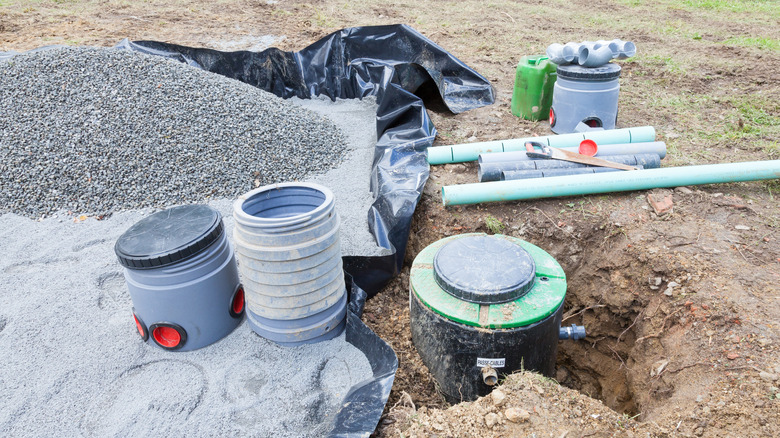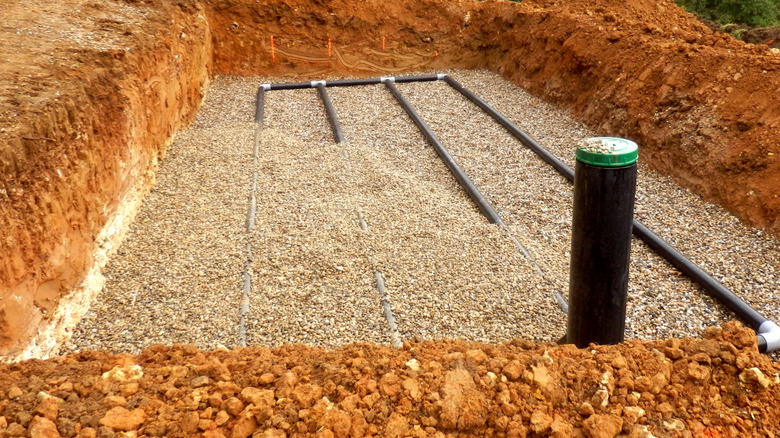The Best Type Of Gravel To Use In Septic Tank Beds To Keep A Mess Out Of Your Yard
To treat their wastewater, properties in the United States not connected to a public sewer are required to install a septic system. Called on-site sewage facilities, or OSSFs, these systems are built to filter and dispose of domestic wastewater before releasing it to the environment. Even if you think you understand everything about how your home's septic tank works, choosing the correct gravel to lay under the septic tank system is equally important to avoid potential issues like messy seepage or even flooding of sewage water. While some cases may be unique, a general recommendation is to use size 57 washed gravel or crushed stone.
Size 57 stone is a common aggregate used for commercial and residential construction projects. The name 57 comes from the type of sieve utilized to achieve particle size, which is later sorted in the course of production. 57 stone is between 1 and 1 1/2 inches in diameter, making it ideal for septic tank beds by providing ample surface area for bacteria and adequate water flow.
Proper design and construction of the gravel bed and using the appropriate type of gravel prevents moist areas and overflows by enabling wastewater drainage from the septic tank and leach field. If it's too small, the gravel may clump and compress, making it difficult for wastewater to filter through the soil and decreasing the drain field's permeability. However, if the gravel size is too big, it may be unevenly distributed or have gaps in between the pieces, causing the water to drain from the field lines too quickly, resulting in backups and flooding. Additionally, the correct size of gravel is vital to allow enough beneficial bacteria to develop, which ensures that wastewater is properly biodegraded.
Size 57 stone allows for proper drainage
The gravel for septic tank systems is placed in its gravel bed, which functions as a filter and a medium. Normally located in a mound system or leaching field, a gravel bed works by processing the wastewater that comes out of a series of perforated pipes buried underground. By ensuring effective filtration of wastewater into the soil, a well-designed gravel bed helps to keep surface and groundwater clean. With regular maintenance, a septic tank can last up to 50 years, and the Environmental Protection Agency suggests doing an inspection and pumping it out once every three years, even before seeing signs that a septic tank needs to be pumped.
Aside from gravel, other materials that can be used for the gravel bed include recycled crushed concrete, crushed glass, and shredded tires. Similar to gravel, concrete is porous and very permeable. Glass, on the other hand, has demonstrated excellent filtration properties for sewage water. Lastly, because of its lightweight nature, high porosity, and great water and contaminant retention, shredded tire rubber make an excellent alternative to gravel in sewage systems. Using these crushed gravel alternatives reduces cost and minimizes environmental impact.
It is important to note that each state has its own set of regulations that govern onsite sewage facilities. This means design, construction, material requirements, and other laws may differ per state. When building on-site sewage facilities, it is best to consult local rules or laws to ensure full compliance. Together with understanding the applicable ordinances for onsite sewage facilities, it is also important to know how to locate the sewer cleanout pipe in an emergency.

